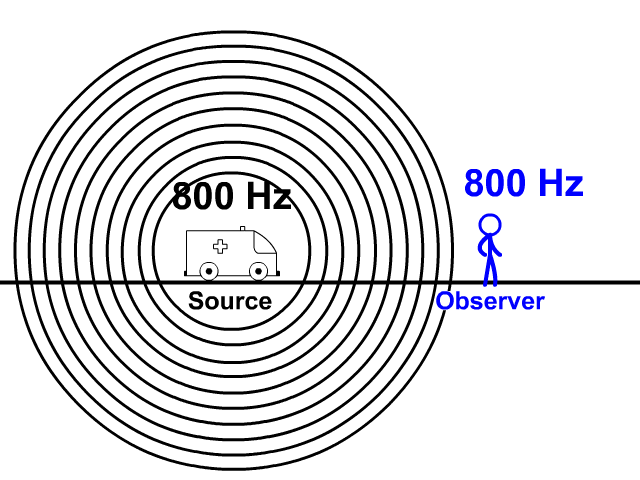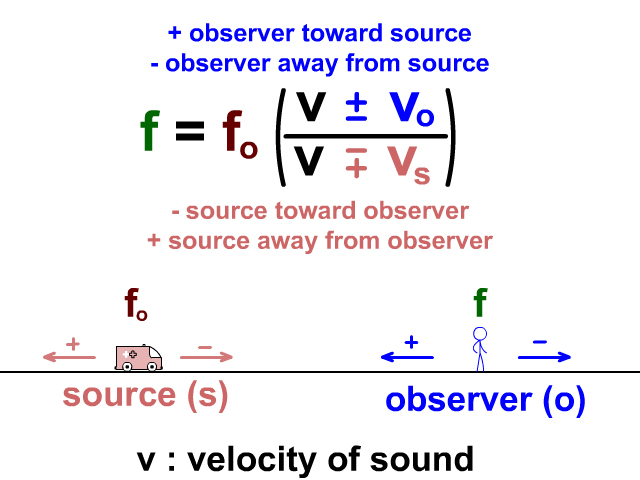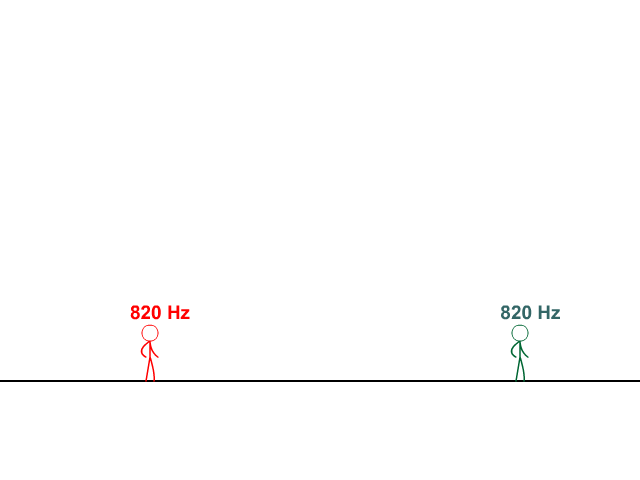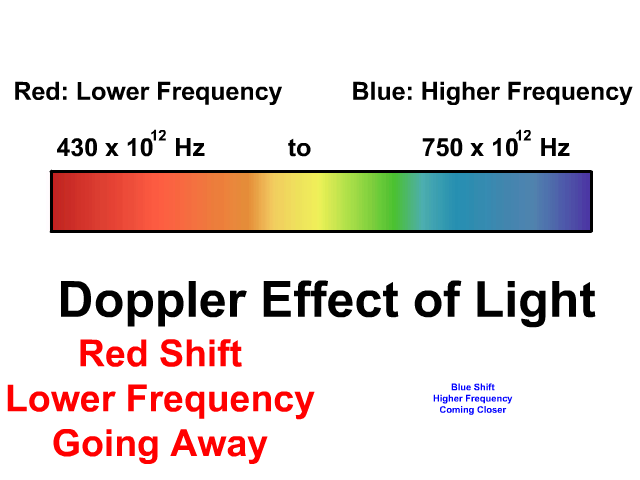The Doppler Effect
The Doppler Effect phenomenon is where perceived frequency of a source is different from the actual frequency due to relative motion of observer and source.
No Doppler Effect with No Relative Motion
Relativity deals with what you are doing compared to an object. Relative motion deals with velocity compared to another object. On earth when we drive 60 miles per hour, that is relative to the ground. Relative to the car you have no relative motion. If a you and a friend are both walking towards each other at 1 mile per hour, your relative motion compared to your friend is 2 miles per hour.
With sound waves, the source will be giving off a frequency of sound. The observer will be listening so the sound.
When there is no relative motion the frequency of sound given off by an object is exactly what you hear. In this animation a frequency of 800 Hz is given off by the source, the ambulance, is what the observer, the stickman, hears.

Doppler Effect Perceived Frequency
When object are coming closer, waves of sound are compressed and creating shorter wavelengths and a higher frequency on approach. As an object is next to you, you hear the actual frequency. After the object passes you by, the waves spread further apart having a larger wavelength and lower frequency. The frequency of sound perceived, herd, being different from what the source actually gives off is the Doppler Effect.
- When you are getting closer to an object, your perceived frequency (pitch) is higher.
- When you are getting further from an object, your perceived frequency (pitch) is lower.
In the animation notice how the frequency is higher on approach, the same next to, and lower upon passing and traveling away.
Doppler Effect of Sound Equation
If the relative velocity of observer and source are towards each other the frequency will be higher than the original frequency. If the relative velocity of observer and source are away from each other the frequency will be lower than the original frequency.
Variables for the Doppler Effect equation for sound
f = frequency perceived
fo = original frequency given off by the source
v = velocity of sound
vo = velocity of the observer (+ if going towards the source and - if going away from the source)
vs = velocity of the source (- if going towards the source and + if going away from the source)

Choosing the Sign in the Doppler Equation
If the two object are getting closer, the perceived frequency should be higher.
- When using the equation, if the observer is going towards the source, vo is positive and the perceived frequency increases.
- When using the equation, if the source is going towards the observer, vs is negative and the perceived frequency increases.
The top sign in the equation (+ or -) is used when going toward the other object. For example if the observer and source were both going towards each other, the top numerator would become (v + vo) and the bottom denominator would become (v – vs). If either the observer or source were not moving, you add 0 or just leave that vo or vs out of the equation.
Some problems may tell you the velocity of sound and others will tell you the temperature and in one additional step, you can find the velocity of sound. Use the equation from our last unit Vsound = 331 + (0.6) (T°c). Click this link for a reminder.
Example Problems
1. A siren on a police car is emitting a frequency of 950 Hz as its driving toward you. Would you hear a frequency more than 950 Hz, 950 Hz, or less than 950 Hz?
2. The speed of sound is 340 m/s one day and the source whose actual frequency is 700 Hz is moving 20 m/s away from the observer who is not moving. What is the perceived frequency of the sound by the observer?
3. A police car drives towards a jogger at 28 m/s as she runs in the direction of the police car at 2 m/s. What would the 700 Hz siren sound like to the jogger? (The speed of sound today is 343 m/s)
4. A humming bird’s wings give off a frequency of 80 Hz as it flies toward you at 21 m/s. What frequency would you hear on a day the temperature is 25°C?
5. Your friend is running after you at 3 m/s calling your name at a frequency of 750 Hz. What frequency would you hear if you were running 3 m/s away from your friend?
Doppler Effect of Light
The Doppler Effect occurs with all waves. Visible light is an electromagnetic wave with a frequency from Red (430 x 10 12 Hz) to Violet (750 x 1012 Hz). Blue light has a higher frequency and if a star is moving closer, it has a blue tint to its light. Red light has a lower frequency and if a star is moving further away, it has a red tint to it.
Links
- On to the Pendulums Lesson
- Back to the Main Waves Page
- Back to the Stickman Physics Home Page
- Equation Sheet


